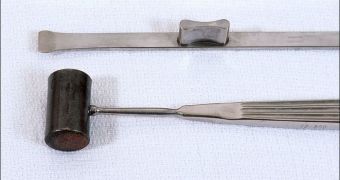While modern-day celebrities have made a point out of altering the shape and size of their nose for purely aesthetic reasons, or for conforming with the demands of working in Hollywood, people living in the Middle Ages did so for entirely different reasons, such as actually fixing someone's face.
A recently-analyzed 16th century book details how surgeons at the time performed rhinoplasty, commonly known as a nose job, of soldiers that were wounded in battles. The operations were very dangerous, and were only conducted when the face was damaged.
The book was not known until recently, when an auction revealed its existence. The manuscript was published back in 1597, by Gaspare Tagliacozzi, and is written in Latin.
It is called De Curtorum Chirurgia Per Insitionem, which translates into The Surgery of Defects by Implantations. The man who published it was a professor of surgery and anatomy at the University of Bologna, which is the oldest continually operating university in the world.
The book mostly revolves around explaining how to carry out operations on the faces of wounded men, but it accompanies the written explanations with illustrations and diagrams, to make the entire thing easier to understand for the common reader.
In what amounts to the first description of a rhinoplasty, the professor explained how a patient's nose can be attached to a flap of skin from his upper arm, a rather daring procedure for that age.
One diagram explaining the procedure shows a patient with his arm sown to his head, and his bicep muscle to his nose. After three weeks of remaining in that position, enough skin grew for the entire region to heal, The Daily Mail reports.
The arm was then separated, and the new flap of skin was put on his nose, completing it. The procedure is undoubtedly more complex than the modern one, but it did get the job done, and the victim retained some semblance of a nose.
The book was sold by the Cirecester-based Dominic Winter auction house for £11,000 to a plastic surgeon. Representative Chris Albury explains: “It's a wonderful and rare book.”
“The typography, illustrations and book design are of a fantastically high standard that would put most modern publishers to shame. What is strange is that the techniques and ideas in the book were clearly well-thought of at the time and yet all was so quickly forgotten following Tagliacozzi's death,” he adds.
“This might have been because it was not approved by the religious authorities at the time who might have considered him interfering with God's work,” the official goes on to say.
After the 16th century, there were no more instances of rhinoplasty recorded until the late 18th century, when the practice resurfaced.

 14 DAY TRIAL //
14 DAY TRIAL //